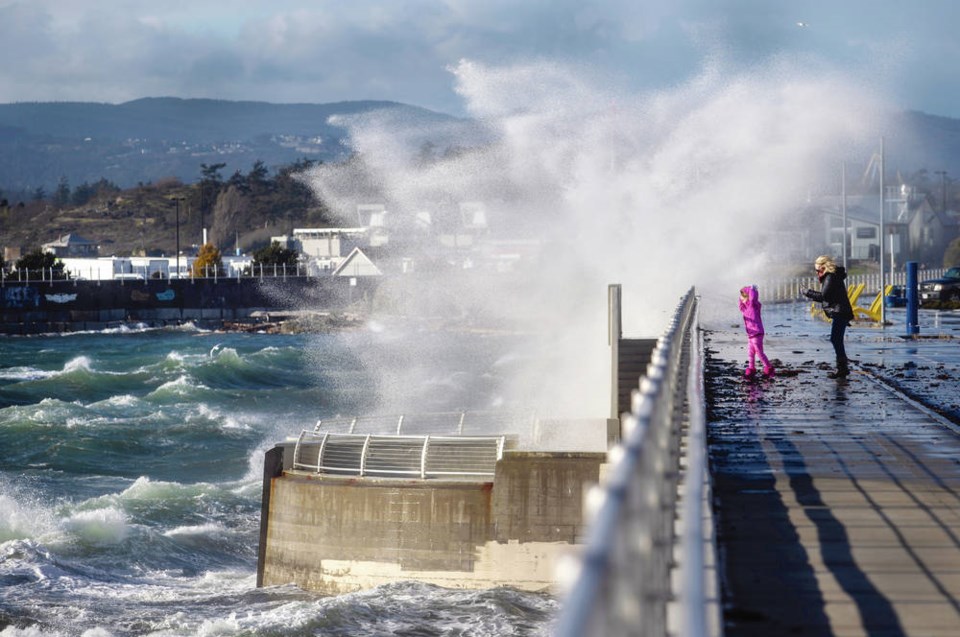It was windy Friday. I couldn’t do a thing with my hair. Either of them.
How windy? Your garbage can lid went on an unscheduled vacation, which, during this pandemic, filled us with envy. Your cat looked like someone had patted it backwards. And, of course, my power went out.
The timing of the latter was serendipitous, sort of, given that it happened on the same day B.C. Hydro released a report saying the coronoavirus has, in an odd way, given British Columbians a false sense of security. It seems people are confusing their pandemic precautions with the steps they need to take to be ready for a lengthy power outage.
The report, Stocked Up But Unprepared, found many of us feel more ready for storm-related outages even though most of us don’t have an emergency kit or plan.
“This sense of preparedness comes from stocking up on household supplies like toilet paper, hand sanitizer, disinfectant wipes, groceries and alcohol – which 44 per cent indicate they have done.”
The lack of proper preparation persists even as the severity and frequency of storms that damage Hydro’s electric system increases.
“New data from B.C. Hydro shows a 117 per cent increase in these storms from 52 in 2014 to an average of 113 over the past three years,” the report says. “This has resulted in an average of one million customers being impacted by storm-related power outages annually, including two of the largest individual storms in B.C. Hydro’s history in 2018 and 2020.”
That December 2018 storm was the most damaging in the utility’s history, with 750,000 customers losing power. That included 87 per cent of us on Vancouver Island and the Gulf Islands, where some residents were still without electricity more than a week after the storm had passed. A Galiano Island father who had to chainsaw his way through fallen trees to get to his son’s elementary school described the scene as “apocalyptic.”
Except even that experience still wasn’t enough to nudge us into putting together an emergency kit, was it? That’s true even with COVID keeping us hunkered in our bunkers. “Unlike years past, half of British Columbians would not leave home to wait out an extended outage in a public place like a mall, restaurant or movie theatre because of the pandemic,” the report said. “However, even with a desire to stay closer to home and the increase in storm-related power outages, over half of British Columbians do not have an emergency preparedness kit — and most do not plan to purchase one this winter. About 30 per cent also admitted they have not taken any steps to prepare for an outage.”
The head-scratching thing is that while we blithely ignore the threat of an outage, we become hyper-vigilant in preparing for calamities that are far less likely. Some people have a hard time separating possibility from probability. We act as though the next tsunami is due to come thundering down the strait on Thursday, or terrorists are lurking under every rock. (Once again, let’s pause to remember our panicked reaction in 2001, when the discovery of anthrax in a few letters in the U.S. triggered evacuations on Vancouver Island — the Salt Spring ferry, the premier’s office, a building at CFB Esquimalt — whenever an unexplained white powder showed up.)
Often it’s a case of lawyers crossbreeding with bureaucrats. Two years ago, Ottawa decided to block public access to the Institute of Ocean Sciences despite the Saanich Peninsula facility having failed to show up on any Al Qaeda to-do list. Five years ago, B.C. Hydro persuaded CRD Parks to shut its Jordan River campsite out of fear of what would happen should a massive earthquake destroy the dam upstream. It did so even though, as one reader calculated, you were far more likely to be killed riding a motorcycle to Jordan River than sleeping in a tent there.
A power outage? Different story. Different odds.
For the record, Hydro recommends keeping an emergency kit that will last at least 72 hours. Among other things, it should include a first aid kit, bottled water (two litres per person per day), non-perishable food, a manual can opener, a flashlight and batteries, a whistle, a battery- or crank-powered radio and clock, personal hygiene items, extra keys for the house and car, and a battery pack for your cell phone. Make a plan for your family or household. Don’t go near downed power lines.
Now go find your garbage can lid.
